Singapore Design Week 2025: Bigger, bolder and abuzz with creative energy
Sign up now: Get ST's newsletters delivered to your inbox
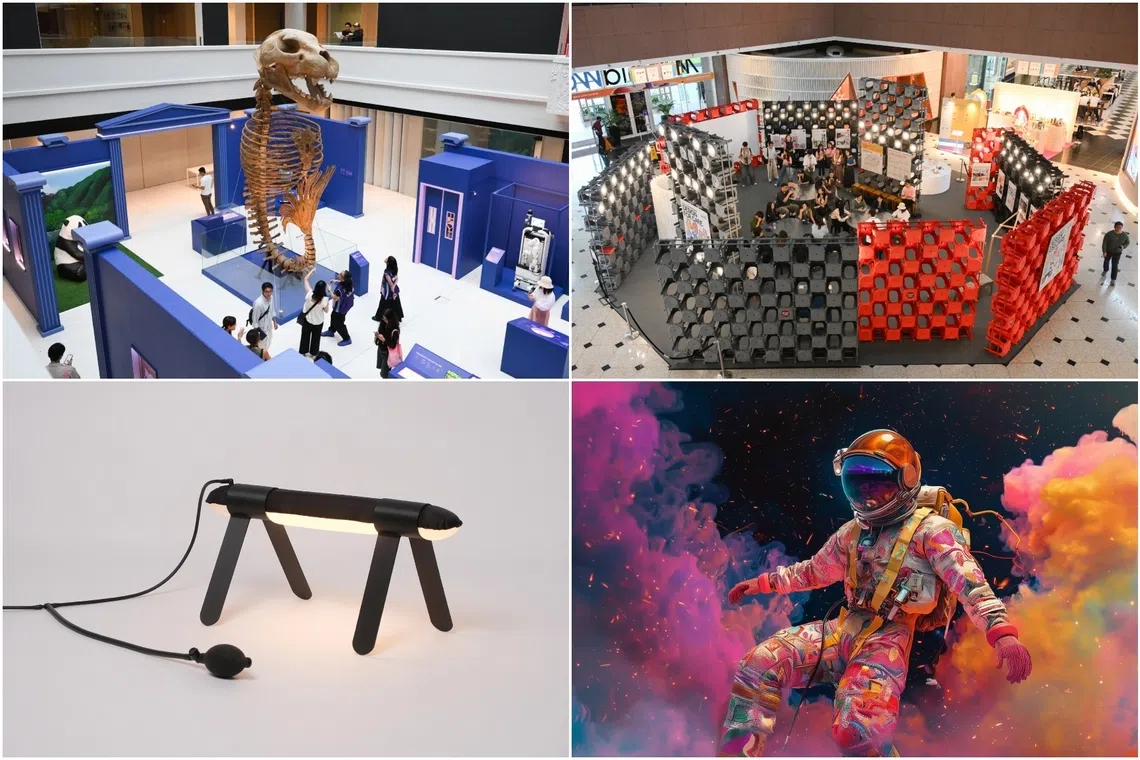
From Sept 11 to 21, Singapore Design Week 2025 will transform the city-state through its festival theme of Nation by Design into a dazzling hub of creative potential.
PHOTOS: SHINTARO TAY, LIAM YOUNG, NATASHA WANGANEEN, COURTESY OF EIAN SIEW
Follow topic:
- Singapore Design Week 2025 transforms the city-state into a dazzling design hub.
- Highlights include the Design Futures Forum, ArtScience Museum's Another World Is Possible, Kinetic Singapore's Unnatural History Museum and Randy Chan's Design for Care exhibition.
- Emerge @ Find showcases young talents and diverse designs.
AI generated
SINGAPORE – With 60 years done, Singapore is already thinking about 60 more years to go.
As the nation celebrates its past achievements with SG60, it is also reaching out to urban planners, designers and residents to not simply ask what comes next, but also: “Who shapes the next 60 years?”
From Sept 11 to 21, Singapore Design Week 2025 (SDW) – organised by national design agency DesignSingapore Council (DSG) – will reimagine the city-state through its festival theme of Nation by Design become a dazzling hub of creative potential.
“Singapore’s journey has always been guided by intention and imagination, and this year’s festival is a powerful reminder of that,” said Ms Jody Teo, festival director of SDW 2025 and director of marketing communications and outreach at DSG.
“Festivalgoers can expect a strong line-up of new commissions and collaborations centred on the theme ‘Nation by Design’, reflecting how design has transformed Singapore and will continue to shape our nation’s story for the future.”
The four design districts – Bras Basah-Bugis, Marina Central, Orchard and the Singapore Science Park – are packed with immersive experiences.
There are about 700 collaborators and more than 70 events across the island for the festival’s SG60 celebratory blowout.
The festival is also focused on participatory design, where citizens are no longer bystanders but co-creators of the city’s evolving urban success story.
Highlights of the 11-day celebration include the festival’s flagship initiative, the Design Futures Forum on Sept 17, a full-day event at Victoria Theatre.
The 2025 forum, its third edition, is co-curated by Mr Aric Chen, director of the Zaha Hadid Foundation, and Ms Ong Ker-Shing, co-founder of Lekker Architects. It will explore global developments in sustainability, emerging technologies, social equity and care.
Other highlights include ArtScience Museum’s premiere of its exhibition titled Another World Is Possible; Kinetic Singapore’s Unnatural History Museum; and architect Randy Chan’s Design for Care exhibition at Marina Central.
DSG’s executive director Dawn Lim says: “With each edition of Singapore Design Week, we invite our partners and creatives to respond to the larger festival theme and make it their own.
“This year, besides Bras Basah-Bugis, our three other design districts have referenced ‘Nation by Design’ in their own unique direction – from robots and agri-food tech at Singapore Science Park to Marina Central’s caring city to Orchard’s youth-led futures.
“Throughout these 11 days of the festival, everyone will get to experience how design in Singapore is bold, playful and profoundly relevant for a nation’s progress.”
The Straits Times scopes out some of the top draws at Singapore Design Week 2025.
Info: For the full line-up of talks, exhibitions and community programmes, go to sdw.designsingapore.org
The Unnatural History Museum of Singapore: How myths and marvels of the mind can shape Singapore’s next 60 years
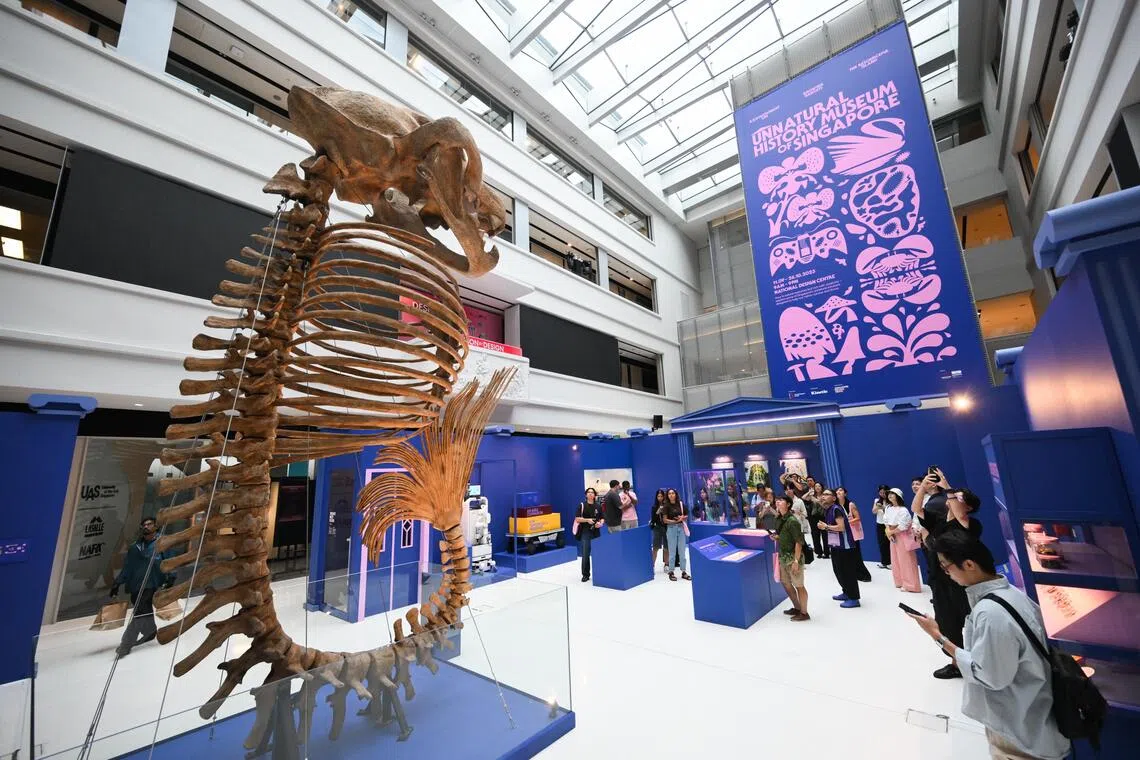
The skeleton of a mythical Merlion at the Unnatural History Museum of Singapore exhibit at the National Design Centre on Sept 9.
ST PHOTO: SHINTARO TAY
Around the globe, there are more than 1,000 natural history museums that display remnants of lost civilisations.
But there is only one Unnatural History Museum of Singapore, newly conjured up at the National Design Centre in Middle Road. There, an imposing 6m skeleton of the island’s mythical half-lion, half-fish Merlion has been assembled, using fibreglass “bone tissue” on a steel frame.
The fantastical skeleton was commissioned by DesignSingapore Council for SDW.
Mr Pann Lim, co-founder of creative agency Kinetic Singapore and lead curator of the Bras Basah-Bugis design district, says all the “artefacts” in this uniquely Singaporean museum are presented as a parody of the collections of natural history museums elsewhere.
He says this is because the city-state, which has no natural resources, had to design its own future over the last six decades using “unnatural” solutions powered by determination, creativity and an urgency of purpose.
How can a nation without natural bounty think differently so it can survive and thrive?

Mr Pann Lim is the co-founder of creative agency Kinetic Singapore and lead curator of the Bras Basah-Bugis design district.
ST PHOTO: SHINTARO TAY
To answer that, Mr Lim and his team of designers, copywriters and project managers came up with their “repository of the unexpected” inside the four-storey atrium to underscore how design resourcefulness has helped secure Singapore’s future.
“Singapore’s journey from Third World to First is already an extraordinary story of our last six decades. What we have today didn’t come naturally. It’s by design,” says Mr Lim, 52, whose works span design, branding and advertising.
The team of 16 creatives from Kinetic Singapore started work on the Unnatural History Museum project in January.
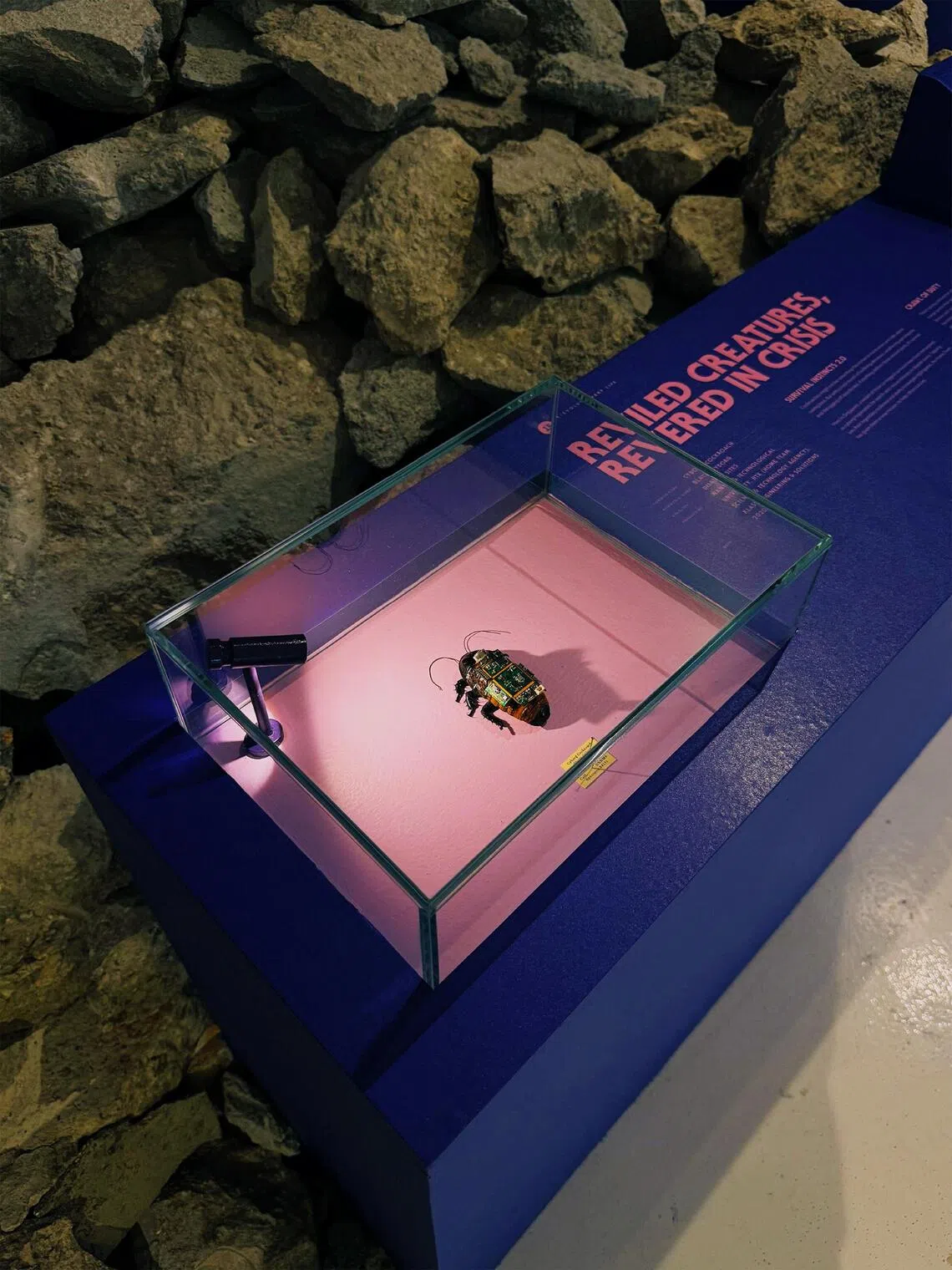
A cockroach-shaped cyborg developed by the Home Team Science and Technology Agency, together with Nanyang Technological University and Klass Engineering and Solutions.
PHOTO: KINETIC SINGAPORE
“Through the exhibition, we hope that this spirit of harnessing design and our ability to think beyond constraints and limitations can continue to inspire all to shape our nation’s next chapter,” he adds.
Visitors will see cyborg cockroaches fitted with navigation sensors and cameras, developed in Singapore for post-disaster search and rescue missions.
On display, too, are autonomous bee drones that mimic the pollination behaviour of real bees, while offering advanced crop analytics for urban farms.
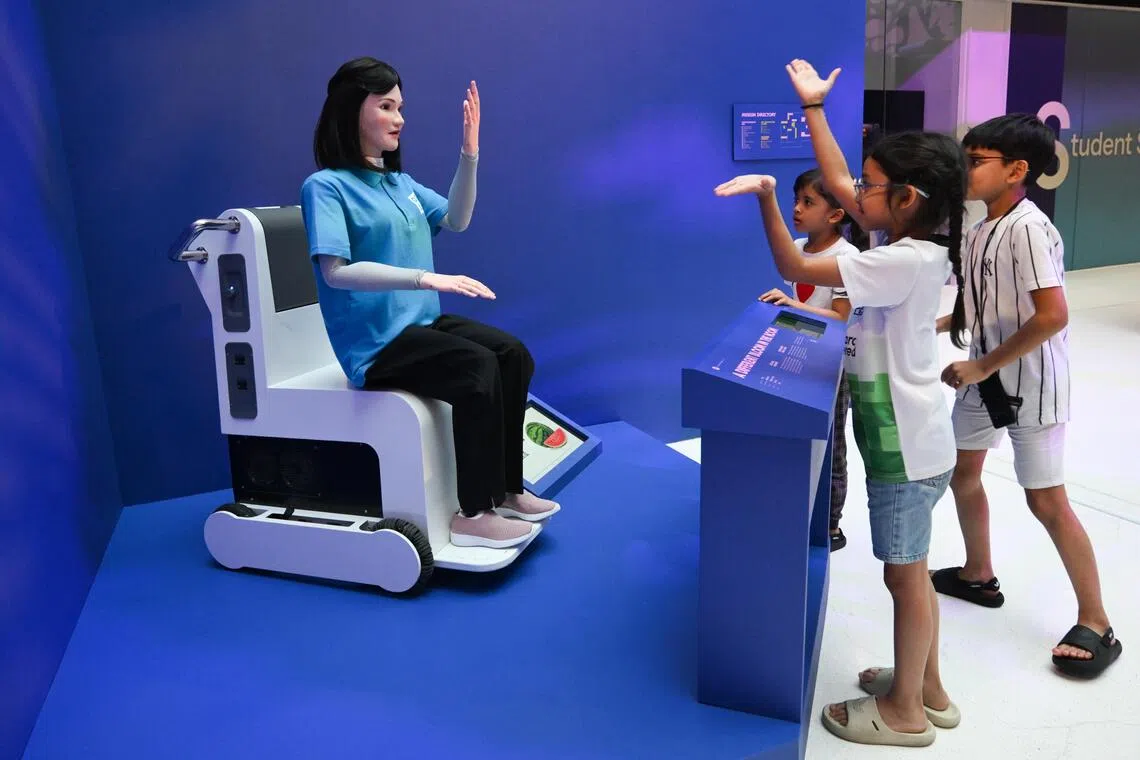
Daisy, a humanoid wellness robot designed as a compassionate complement to the services provided by Singapore’s eldercare workforce.
ST PHOTO: SHINTARO TAY
Then there is Daisy, a humanoid wellness robot designed as a compassionate complement to the services provided by Singapore’s eldercare workforce.
The robot is able to conduct group exercises for people with various levels of fitness, and improve their attention and memory with games designed to engage them for prolonged periods of time.
Mr Lim says his team looked for objects or ideas that were not just visually striking, but also symbolised something deeper about Singapore.
He cites the Merlion, which showcases the nation’s efforts in transforming a logo initially designed for the Singapore Tourism Promotion Board in 1964 into an iconic statue unveiled in 1972 at the mouth of the Singapore River.
“Besides the mythical Merlion, even Singapore’s national flower, the Vanda Miss Joaquim is a man-made hybrid, representing our famed orchid hybridisation programme and orchid diplomacy. And there’s plenty more for visitors to uncover in the exhibition,” he adds.
“What underpins these objects and ideas is a greater story about how these man-made solutions have helped our nation thrive.
“And more importantly, we hope people will see that they, too, can help shape Singapore’s next 60 years in their own creative ways.”
Find Your Folks @ Jalan Besar: Get the party started
Where others see pavements, Lopelab sees potential. This is the calling card for the Singapore-based urban placemaking consultancy, founded in 2015 by Italian national Lorenzo Petrillo.
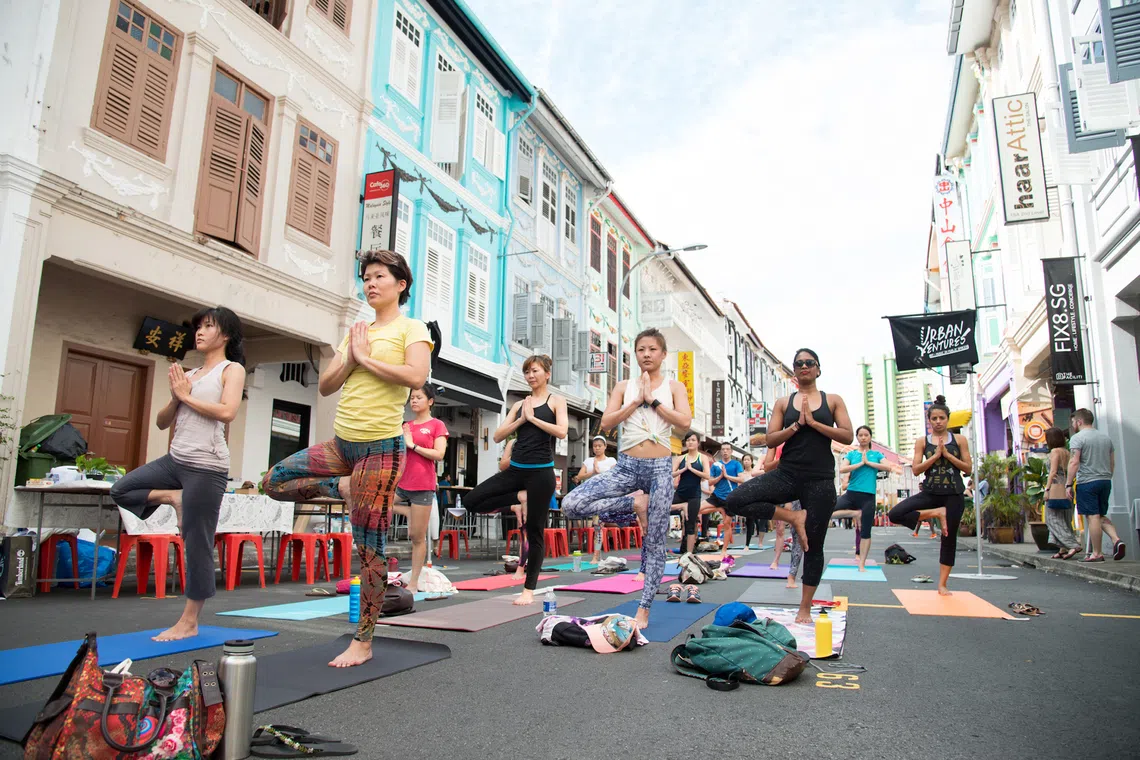
People doing yoga in Keong Saik Road during Urban Ventures’ 2016 edition.
PHOTO: LOPELAB
Through his Urban Ventures initiative in 2016, Lopelab transformed the former red-light district of Keong Saik Road with a series of street parties and urban regeneration projects.
Now, the 46-year-old, who is the lead curator for the Jalan Besar cluster during SDW, is unveiling Find Your Folks @ Jalan Besar. The two-part cultural series blends design, food, music and community over two weekends in one of Singapore’s most eclectic enclaves.
Jalan Besar is famed for its traditional trades, such as metal workshops and tyre repair shops, that stand cheek by jowl with hipster artisanal cafes, craft beer bars and trendy boutiques.
The two-part street festival is co-organised by Lopelab and Ice Cream Sundays, in partnership with DSG and Enterprise Singapore (ESG).
ESG’s role in the street festival involves facilitating partnerships with local businesses, empowering independent creators, and strengthening the ecosystem for urban placemaking and enterprise innovation in Jalan Besar.
From Sept 11 to 19, there will be a Makers’ Trail where festivalgoers get to discover a chain of street-side benches, each a bold, site-specific installation co-designed with Jalan Besar businesses such as craft beer restaurant Druggists, cafe Chye Seng Huat Hardware and coffee bar Community Coffee.
With every stop, visitors plunge deeper into the creative core of the neighbourhood, uncovering vibrant businesses and cultural icons that are a big part of Jalan Besar.
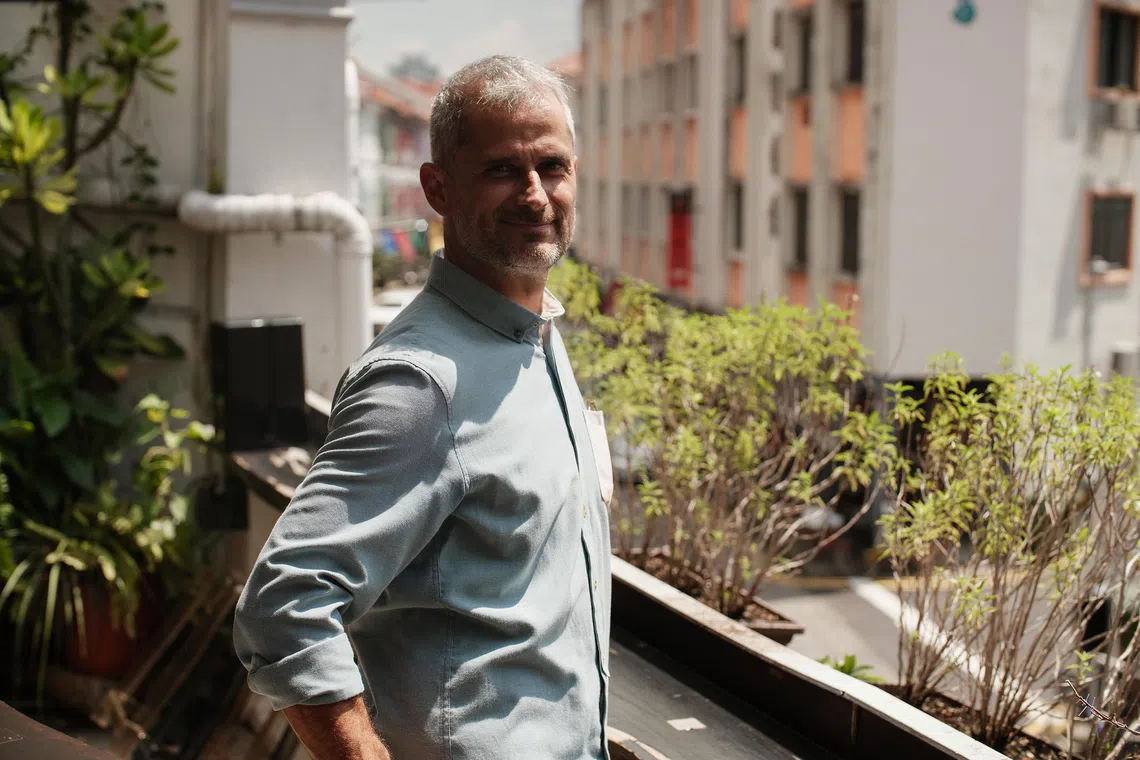
Lopelab founder Lorenzo Petrillo is the lead curator for the Jalan Besar cluster during Singapore Design Week.
PHOTO: URBAN VENTURES
Mr Petrillo says Jalan Besar’s hardware shops, suppliers and small businesses have for decades shaped the identity of the area.
“We worked with cafes and retailers like Chye Seng Huat Hardware, The Fashion Pulpit and Druggists to co-design benches that show that design is not just imported or top-down, but embedded in everyday trades,” he recounts.
“Each bench is made with materials sourced locally, and each comes with a kind of ‘receipt’ – an inventory and a QR code for people to download the bench’s technical drawings. It’s a generous, open-source way of saying, ‘Jalan Besar is a maker’s district, and its stories can live beyond the festival.’”
Inspired by the resourceful adaptations of public space in Jalan Besar’s alleys, Lopelab conceived the idea of benches to encourage people to pause, observe and connect.
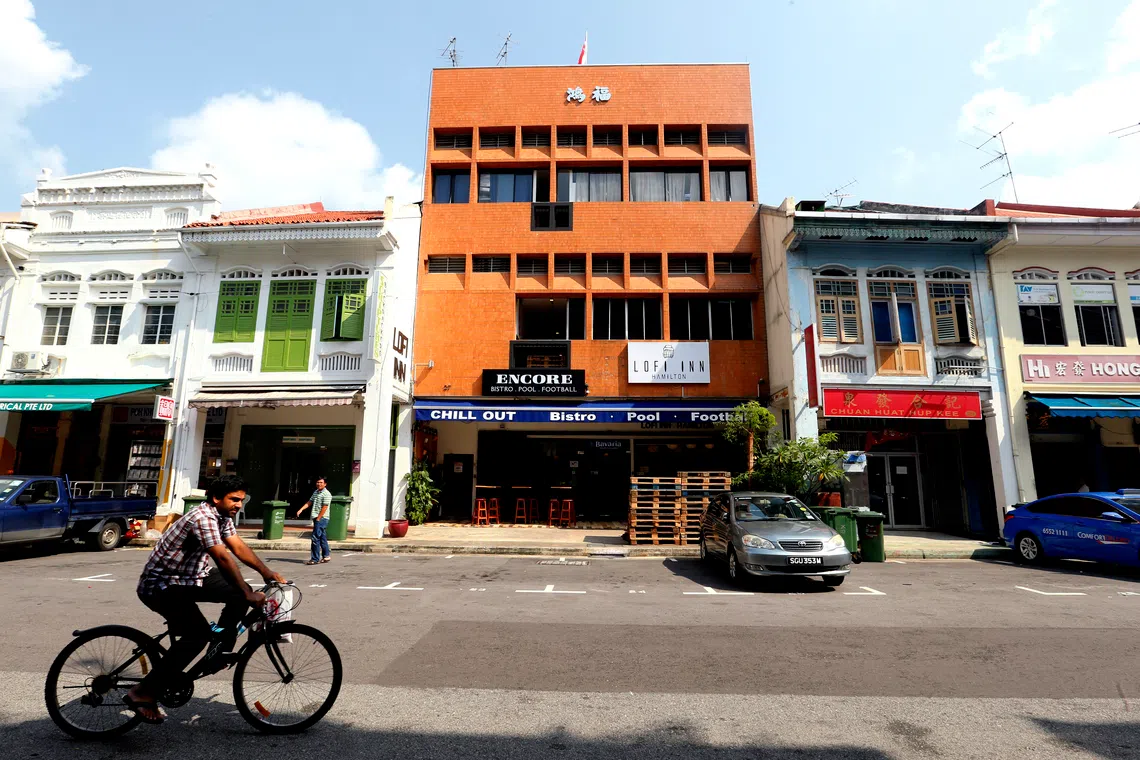
A 2014 file photo of Jalan Besar, a traditional home to hardware stores which has in recent years welcomed trendy cafes and boutiques.
PHOTO: ST FILE
Then on Sept 20 and 21, a street party with live music by groups such as Darker Than Wax, Revision Music and Nomad Solar Sound takes centre stage along Hamilton Road, which will be closed to traffic.
There will also be a Skate Jam with skatable installations and skate art, street chess by Aliwal Chess Club, children’s craft workshops and thrift markets.
“Our guiding vision was to transform Jalan Besar into a cultural playground where every activity reflects a layer of the neighbourhood’s identity. Food is central because Jalan Besar is known for its eateries, from iconic hawker favourites to new restaurants, such as Wild Coco and Rex Steakhouse & Bar,” adds Mr Petrillo.
Music and nightlife are part of Jalan Besar’s character too, he reasons.
Urban sports such as the Skate Jam capture the grit and youthful energy of the streets, while visual art and projection mapping highlight the area’s architecture and texture.
Mr Petrillo says: “All of this ties back to the bigger goal of aligning with Singapore Design Week to showcase design’s impact on everyday life, and with Enterprise Singapore’s goal of creating business opportunities by drawing footfall and visibility for small businesses.”
Marina Central: Weaving care into the fabric of society
Care is the overarching theme that binds the installations and events planned for the Marina Design District, comprising Marina Square, Millenia Walk, South Beach and Suntec City.
Highlights include a playful Care Pavilion made from Unica plastic stools and an inclusive indoor playground conceived especially for neurodivergent children.
Called Design for Care at Marina Central, the exhibition is in one of the four SDW districts that include Bras Basah-Bugis, Orchard Road and Singapore Science Centre.
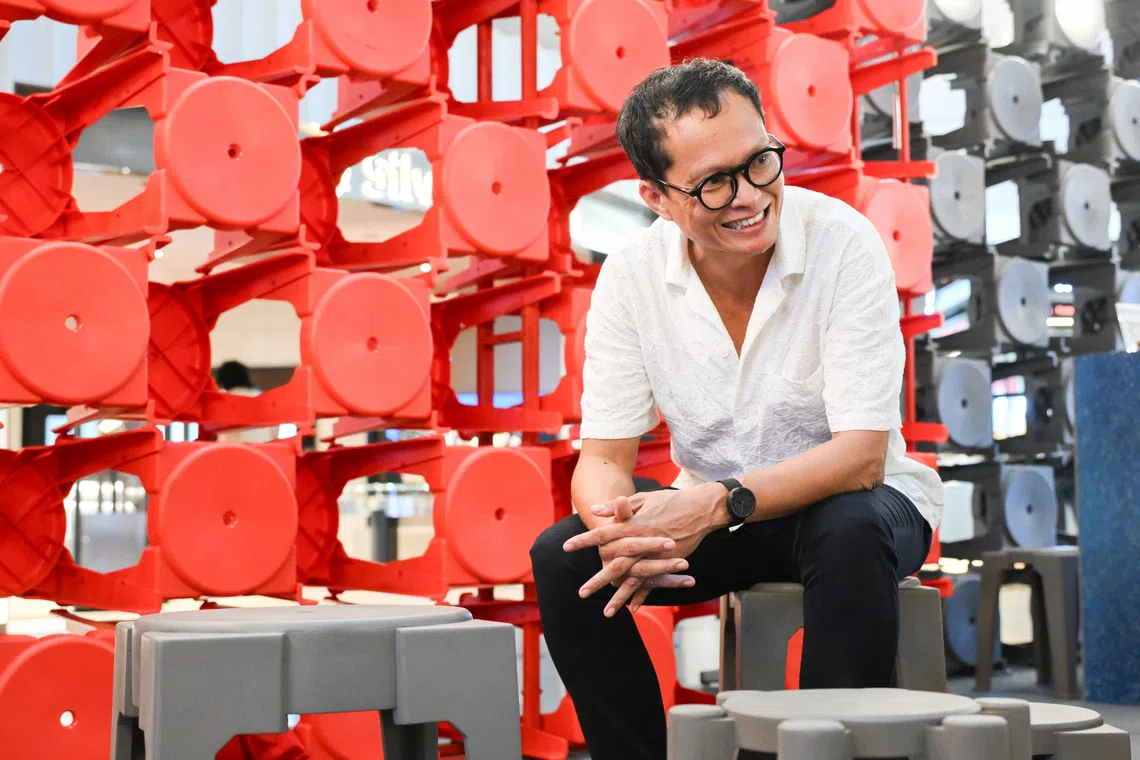
Designer Randy Chan at the Design for Care exhibit at Millenia Walk.
ST PHOTO: SHINTARO TAY
Put together by Mr Randy Chan, lead curator for Design for Care at Marina Central and principal architect at home-grown practice Zarch Collaboratives, the district presents 10 showcases that show how “care” can be woven into spatial, social and environmental design practices.
“The chair is one of the most intimate objects in design because it physically supports the human body, often shaping itself to comfort, embrace and respond to our presence.
“In the context of Care, the chair functions more than a utilitarian object. It serves as a relational tool that represents support and trust,” says Mr Chan, 55.
He recalls that when he was a child, neighbours and friends would welcome one another by inviting people into their homes, imploring them to “sit, sit”.
“For the concept of the Care Pavilion, I based my design on this recollection. I aimed for a design that would be accessible and familiar to individuals regardless of their background or prior exposure to design, thereby reducing alienation.”
He used 991 Unica coffee-shop chairs arranged in a hexagonal pattern to create a gathering and exhibition space.
The ubiquitous chair was created in the 1990s by Singaporean industrial designer Chew Moh Jin.

Mr Chan arranged 991 Unica coffee-shop chairs in a hexagonal pattern to create a gathering and exhibition space.
ST PHOTO: SHINTARO TAY
The energy is then dialled up in the district over the weekend with District M, a two-day musical extravaganza from Sept 19 to 20, featuring 16 local and international acts.
Mr Chan notes that in a hyper-urban and digitally connected city such as Singapore, it is easy to overlook the quiet structures of care that hold individuals together, such as community and urban nooks.
He adds: “My hope is that visitors leave with a deeper sense of empathy and appreciation for both people and place.”
ArtScience Museum: When imagination becomes a tool for change
From the lush, green portals of the new Another World Is Possible exhibition at Level 3 of ArtScience Museum at Marina Bay Sands to the rich, multimedia projections and mind-boggling array of installations inside that take up the entire floor, museumgoers are in for a treat.
Audiences weaned on apocalyptic visions of the future by Hollywood seers such as English director Ridley Scott, who seared the 1982 hit Blade Runner into public memory, will come away from Another World Is Possible with hope for the future.
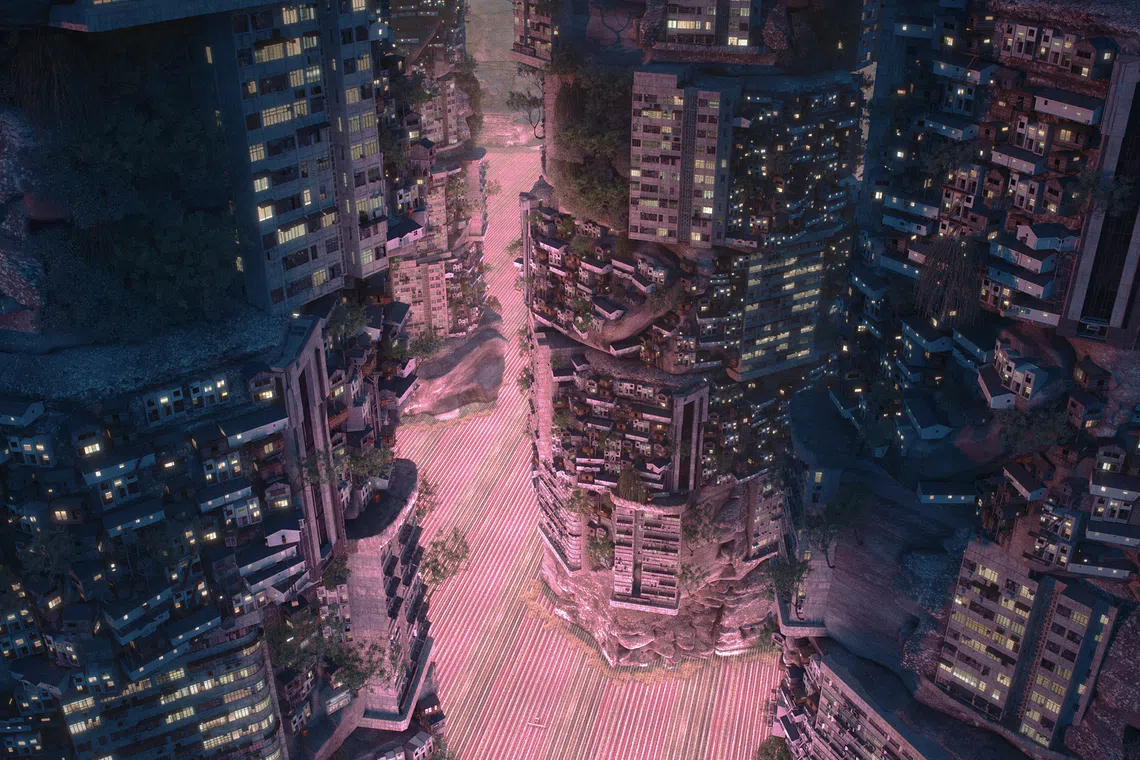
Planet City by Liam Young, one of the works on display at Another World Is Possible.
PHOTO: LIAM YOUNG
The exhibition makes a bold statement that optimism can be a form of agency, and that imagination is not an escape from the present but a tool for change.
One of the key events of SDW, the exhibition shows a future through a distinctly Singaporean lens – one shaped by long-term thinking, environmental pragmatism and an ethos of collective responsibility.
The ticketed show runs from Sept 13 to Feb 22, 2026. It is co-curated by ArtScience Museum and Bafta-nominated producer, film-maker and speculative architect Liam Young in partnership with screen culture museum ACMI in Melbourne, Australia. It is part of ArtScience Museum’s celebration of SG60 and is sponsored by DSG.

Producer, film-maker and speculative architect Liam Young.
PHOTO: COURTESY OF LIAM YOUNG
“The exhibition makes clear that Singapore’s path forward is not the preserve of urban planners alone,” says Ms Honor Harger, vice-president of ArtScience Museum and the exhibition’s co-curator.
“It is also sparked by the visions, hopes and collaborative energy of every resident. Visitors are asked to imagine the Singapore they want to see and to consider the part they can play in bringing that future to life.”
Ms Harger, who has worked for more than two decades at the intersection of art and science, says one thing she has noticed is how often the future is pictured in terms of collapse. In global popular culture and contemporary art, dystopia has become the default language of the future.
“Those images can be powerful, but they can also paralyse us, leaving little room to imagine how life might continue, adapt or even flourish,” she says.
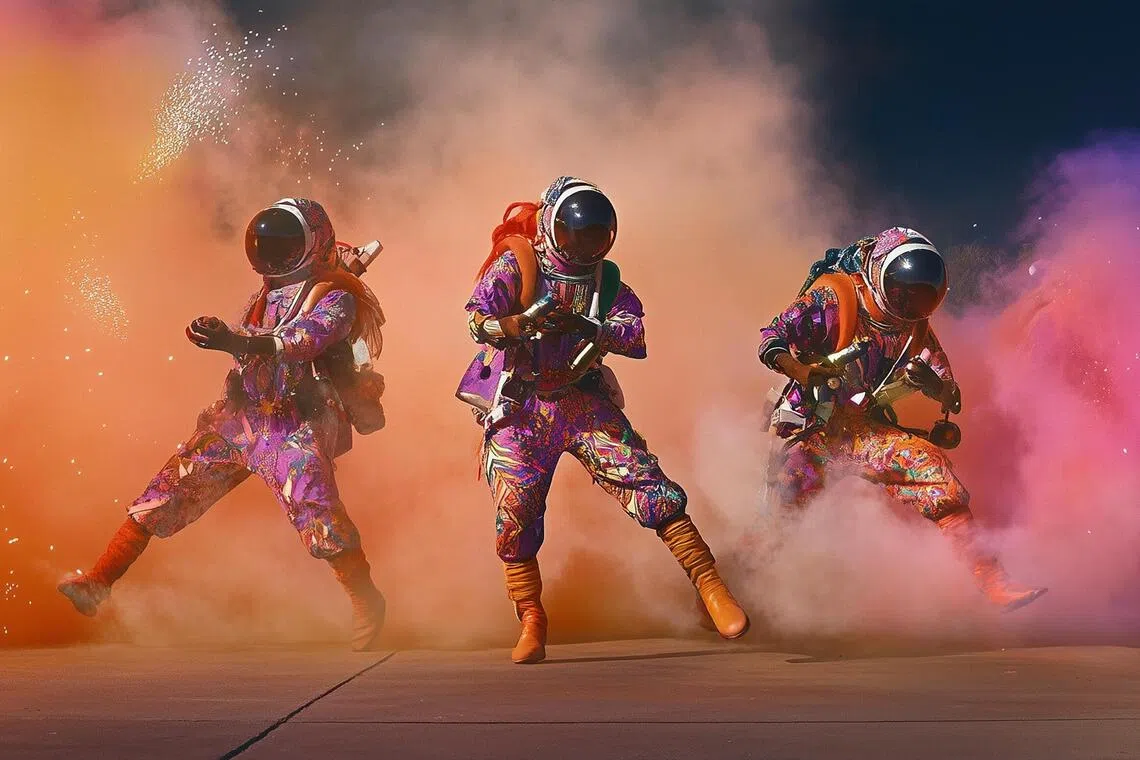
After the End (2024) by Liam Young (above) and Natasha Wanganeen. Commissioned by museum of screen culture ACMI in Melbourne, Australia.
PHOTO: LIAM YOUNG, NATASHA WANGANEEN
A quote she is particularly fond of, and which has guided her work, comes from American novelist Rene Denfeld, who once wrote: “If you think about it, imagination is actually a radical act. Because if you have an imagination, you can imagine yourself in a different future.”
Among the highlights are immersive works by Young, who is joined by global icons such as Icelandic artiste Bjork and South-east Asian names, including Torlarp Larpjaroensook, Ong Kian Peng and Ming Wong.
Info: Another World Is Possible is at ArtScience Museum, 10 Bayfront Avenue. For bookings, go to str.sg/Bpft
Emerge @ Find – Design Fair Asia: First S’porean co-curator seeks sweet spot between tradition and innovation
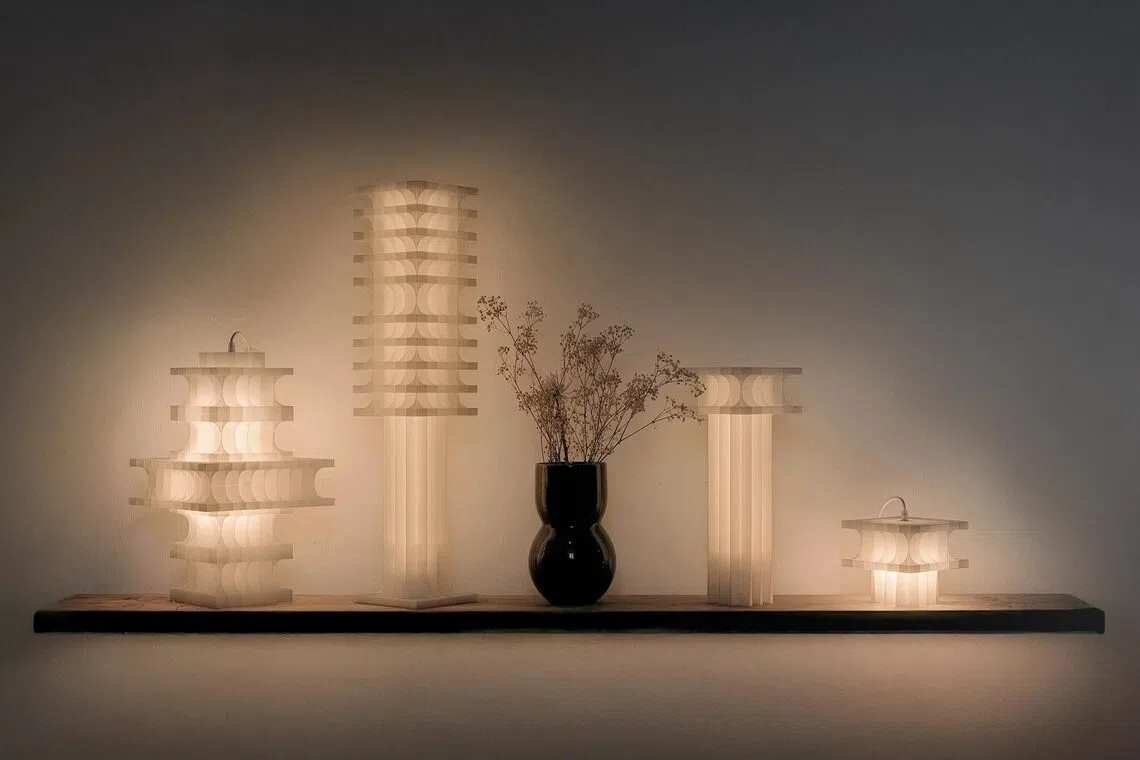
Hong Kong’s Ultramar Studio, debuting at Emerge @ Find, channels celestial mythology and imperial architecture into its Citadel light sculpture series.
PHOTO: ULTRAMAR STUDIO
Emerge @ Find, which celebrates the works of young talent, has unveiled its most ambitious and inclusive chapter yet for SDW.
It is part of the fourth edition of Asia’s biggest trade fair for furniture, interiors and design called Find – Design Fair Asia, also known as “Find”.
Both showcases run from Sept 11 to 13 at Marina Bay Sands Expo & Convention Centre.
Find – Design Fair Asia features more than 250 international brands and five national pavilions.
The Emerge showcase, which celebrated mainly regional makers and artisans in the past, has an expanded scope in 2025 that includes talent from East Asia as well, with more than 70 designers presenting over 100 works.
Presented by DesignSingapore Council, this milestone edition propels Emerge into new territory.
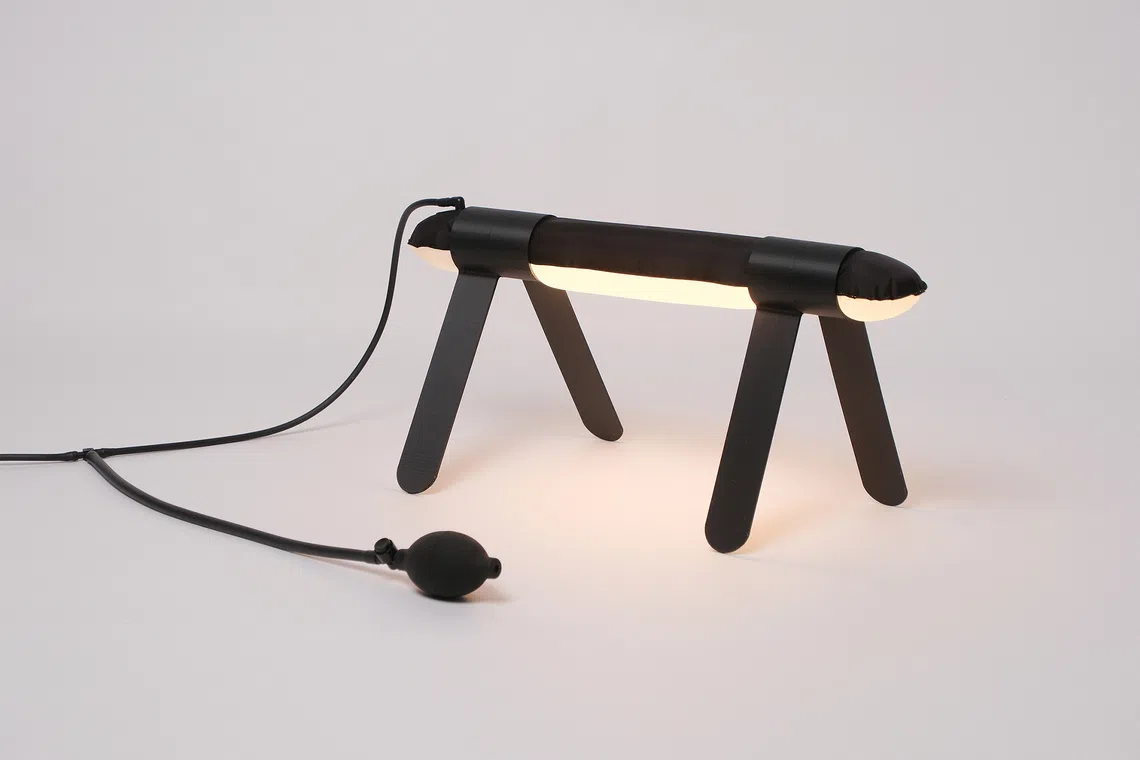
Singapore designer Eian Siew’s Air(just) explores how air might shape and reconfigure light by replacing traditional joints with inflated bladders.
PHOTO: EIAN SIEW
For the first time, designers from China, Hong Kong, Japan, South Korea and Taiwan are joining the line-up, in addition to established names from South-east Asia, including Singapore, Indonesia, Malaysia, the Philippines, Thailand, Vietnam and Timor-Leste.
Emerge @ Find also introduces Singaporean co-curator Edwin Low, co-founder of home-grown lifestyle and gifts brand Supermama, alongside returning co-curator Suzy Annetta, founder, publisher and director of brand experiences at global design magazine Design Anthology.
The show’s theme of “Dialogue through Design” is centred on storytelling, collaboration and connection that bridges disciplines, cultures and urgent global issues.
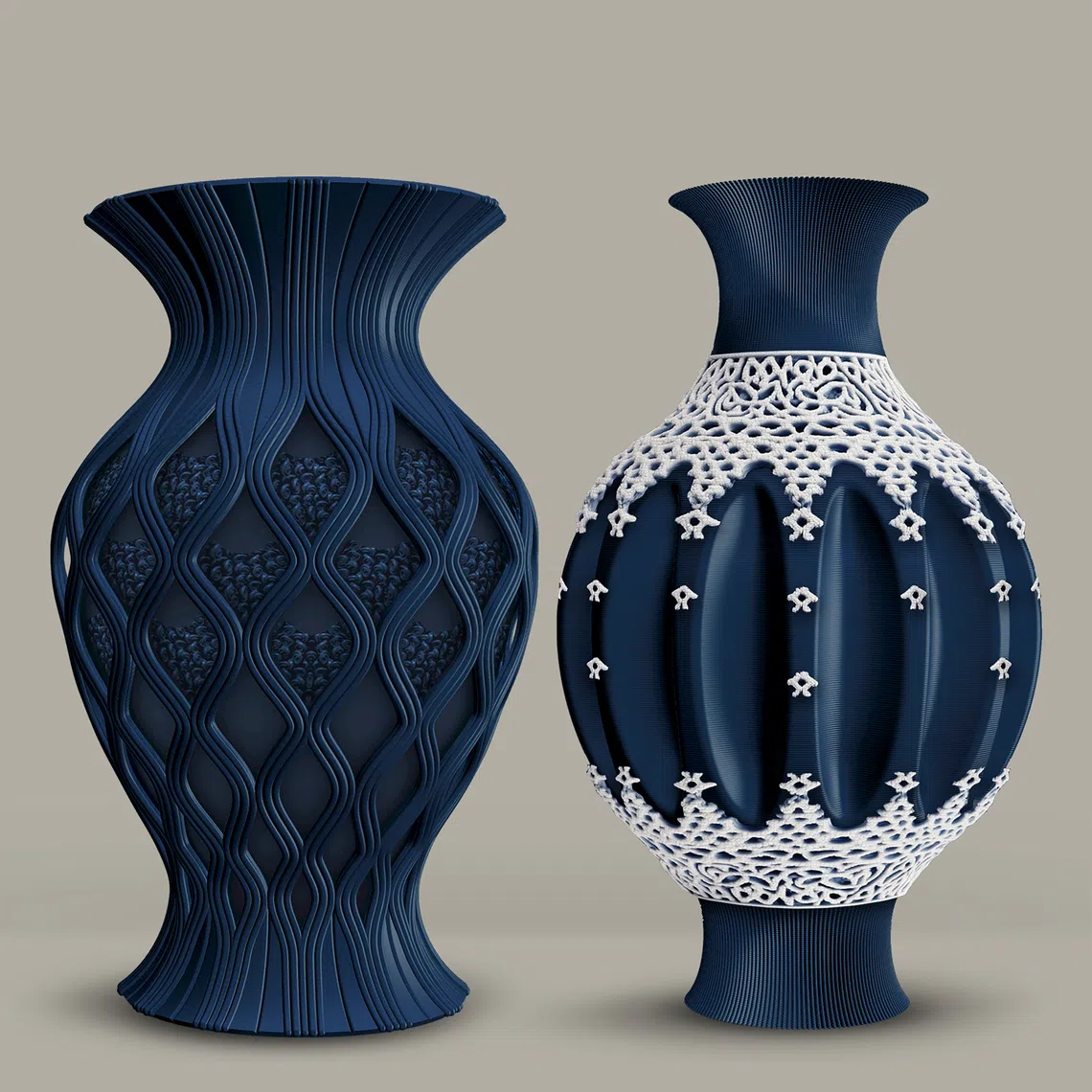
Threads Of Becoming by Singapore designers Shervon and Melvin Ong fuses hand-threaded lacquer technique traditionally used in religious effigies with contemporary 3D printing.
PHOTO: SHERVON AND MELVIN ONG
“At Supermama, I learnt that tradition and innovation are not always in conflict,” says Mr Low, 45, who runs Supermama’s flagship store at 213 Henderson Road.
They are often parallel threads that, when woven together, create something new, he says.
Working with Japanese makers taught him the value of heritage, patience and mastery.
At the same time, telling Singapore stories through these objects has pushed him to experiment with new forms, materials and collaborations with his Supermama team in Singapore.
“For Emerge @ Find, I looked for designers who live in that balance, or who have those design sensibilities. They respect tradition, but push boundaries with new tools and ideas. What excites me most is the ‘in-between’ – where art and design meet, and where objects carry function and poetry at the same time.
“I think that is the space in which Asian design can keep growing,” he says.
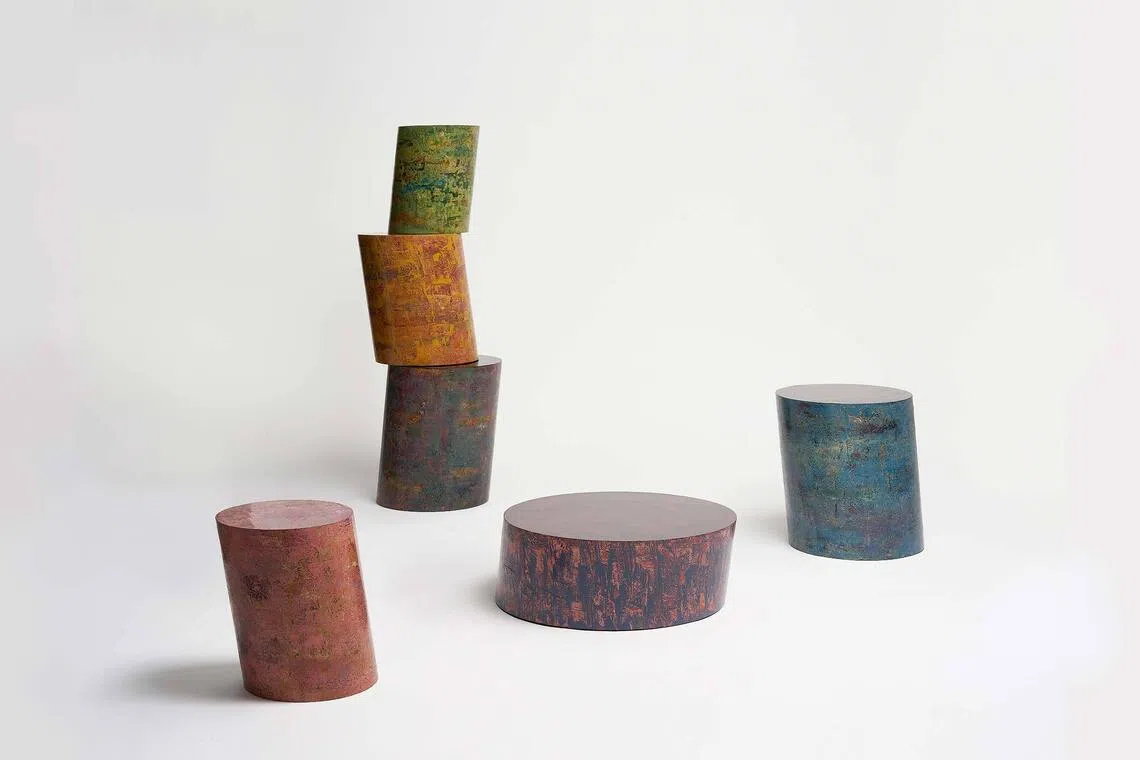
Merge_Wishing Pagoda by Ok Kim from Seoul, inspired by the tradition of stacking stones to express wishes and hopes.
PHOTO: OK KIM
He also notes that the 2025 edition’s shift towards collaborative making and dynamic engagement energises the conversation, bringing new voices, fresh methods and meaningful connections to the forefront.
“In my experience, design has always been about the intangible values that tangible objects carry.
“I began Supermama by asking if our Singapore identity could be defined through objects. Over time, I realised our stories are never told in isolation. They are shaped by trade, migration and cultural crossings,” he adds.
His time managing the museum store at the Asian Civilisations Museum since 2021 made this even clearer, as he saw how history is a tapestry of exchange, and how these creative exchanges shape objects that capture the essence of their time.
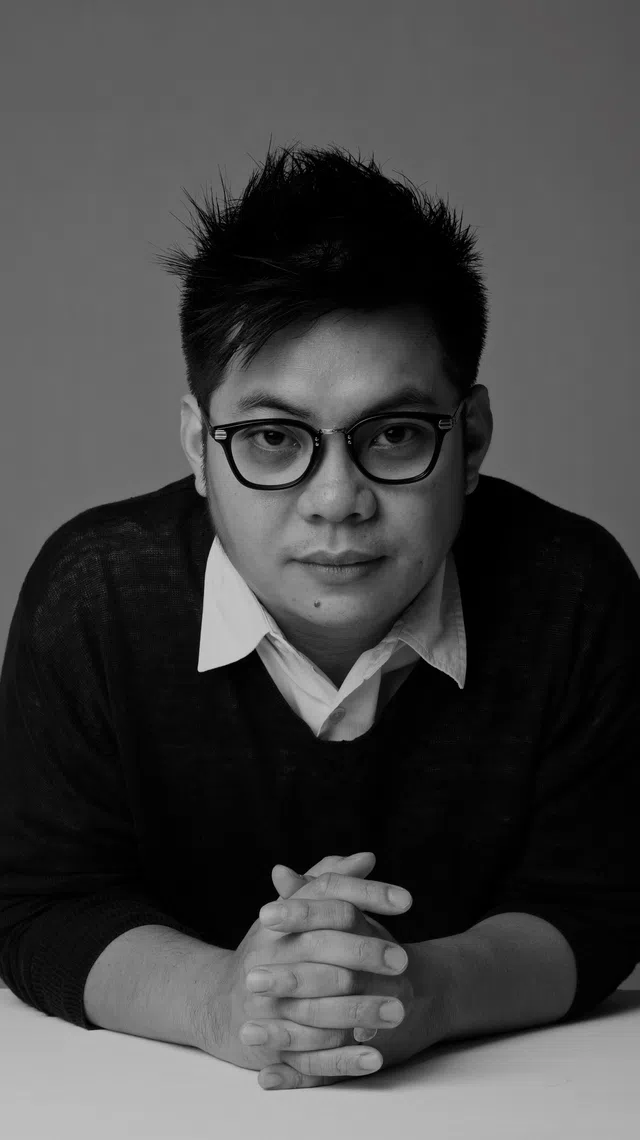
Mr Edwin Low is the founder of Supermama.
PHOTO: SUPERMAMA
“Expanding Emerge beyond South-east Asia is simply recognising this reality. Asian design is interconnected. Its strength lies in its plurality,” he adds.
“Cultural exchange keeps traditions alive. It also gives young designers the confidence to add their voices to a wider global conversation. That is the spirit we want Emerge @ Find to capture.”
More design draws
Singapore River Festival
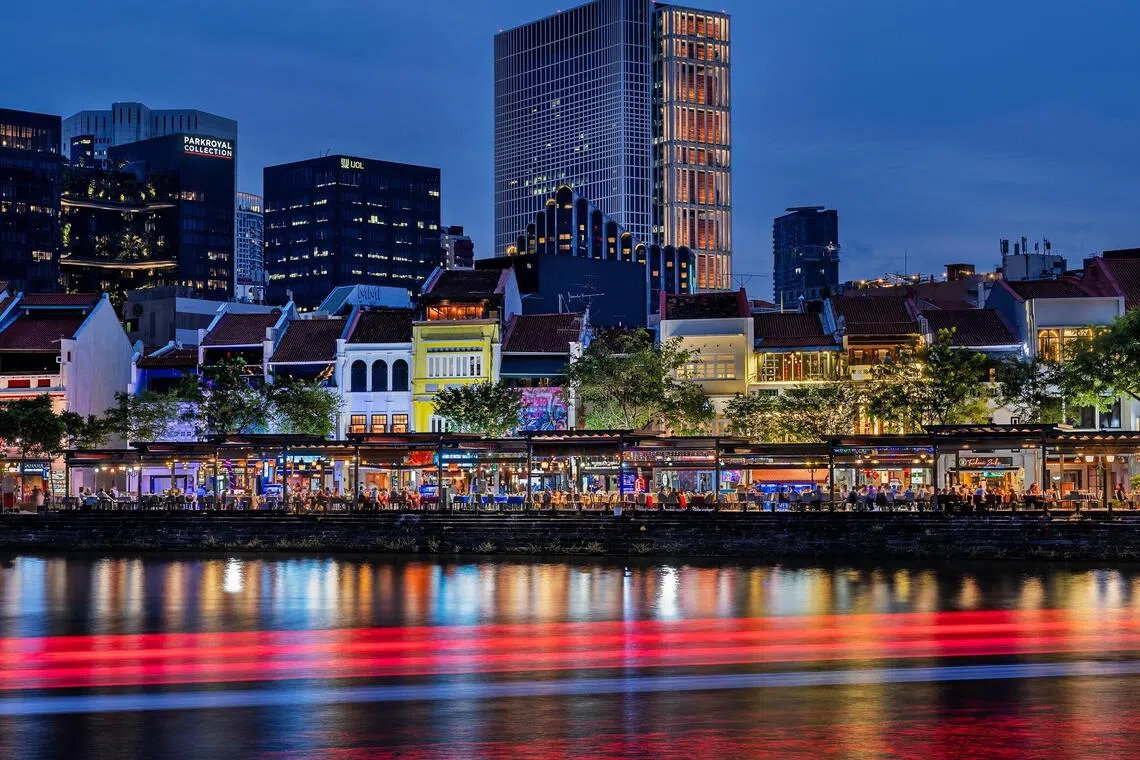
The Singapore River Festival returns from Sept 12 to 21 with its first Design Edition at the waterfront.
PHOTO: SINGAPORE RIVER FESTIVAL
The Singapore River Festival returns from Sept 12 to 21 with its first Design Edition, turning the waterfront into a playground for art, light and imagination.
This special edition ensures Boat Quay, Clarke Quay and Robertson Quay set the after-hours mood for the festival.
Under the theme “River of Dreams”, festivalgoers will enjoy kaleidoscopic light displays on bridges, immersive projection mapping and Instagram-worthy spaces designed together with home-grown talent.
The event brings together heritage tours, artisanal markets, open-air cinema nights and interactive workshops – all choreographed to connect, inspire and transform this storied river into a beacon of collective joy.
New Design District: Singapore Science Park
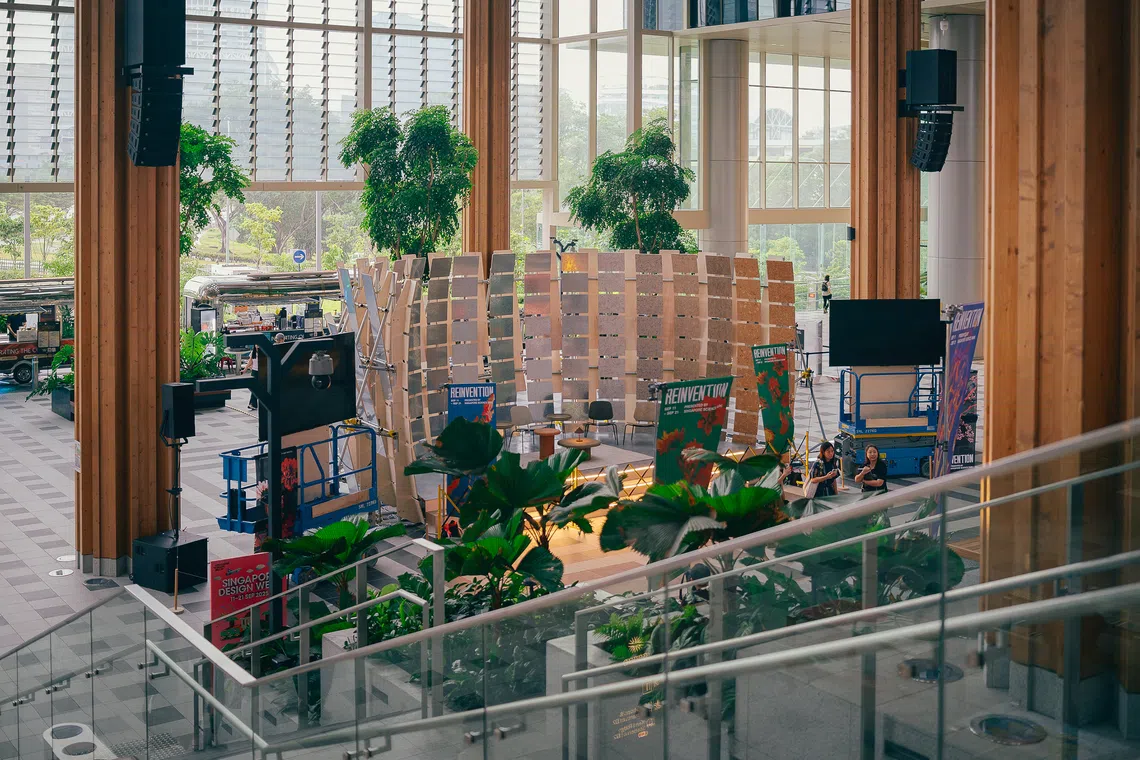
Curated by OuterEdit with CapitaLand Development, this first-of-its-kind activation turns the district into a vibrant living lab packed with hands-on installations, prototypes and forward-looking experiments.
PHOTO: OUTEREDIT
Science and design collide at the Geneo precinct, which has been reinvented as a playground for fresh ideas.
Curated by OuterEdit with CapitaLand Development, this first-of-its-kind activation turns the district into a vibrant living lab packed with hands-on installations, prototypes and forward-looking experiments.
Industry trailblazers Denso and Merck, along with Singaporean firms Green House and Tusitala, explore the role of design thinking in urban planning, healthcare and sustainability – making the district pulse with innovation from every angle.
Youth jaunts at Orchard Design District
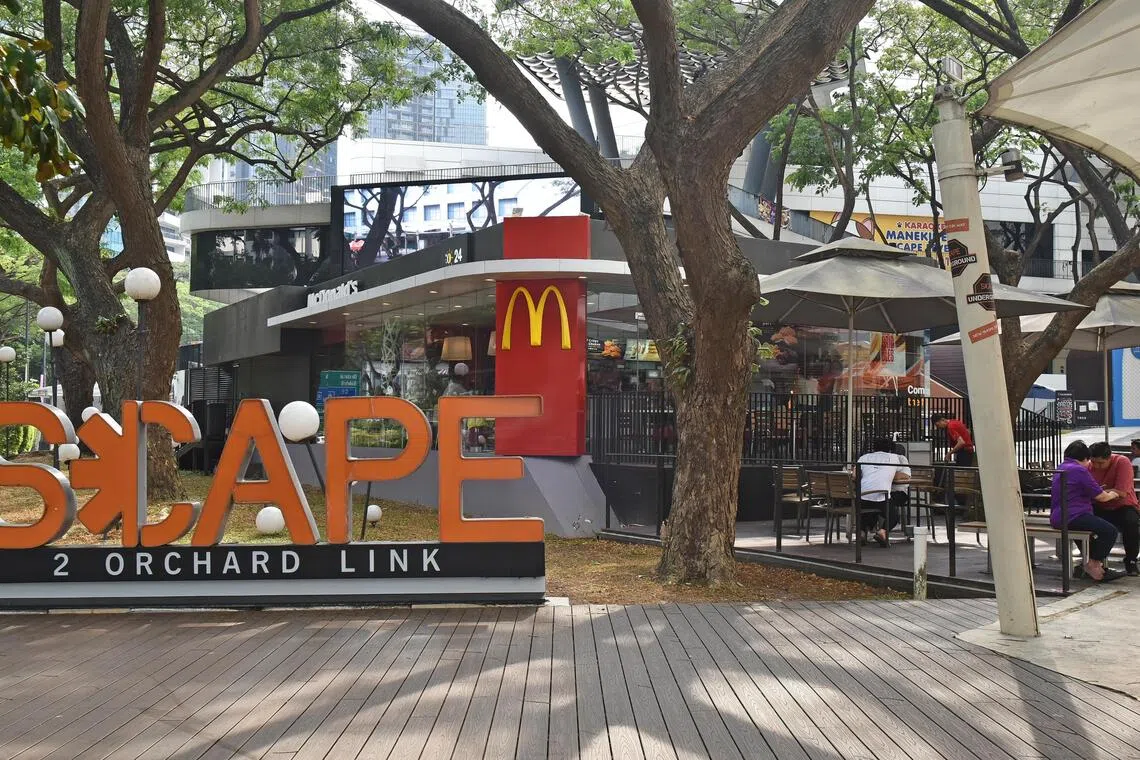
The area from *Scape and Cathay Cineleisure Orchard to the junction of Somerset and Killiney roads is a hub for youth organisations, businesses and service providers.
ST PHOTO: JOSEPH CHUA
The Orchard Design District embraces *Scape and the Somerset Belt, inviting youth to shape the future through “Open Design Dialogue”.
Curated by Mr Jerry Goh of Grain, the centrepiece is a collaborative pavilion developed with architectural designer Nous Nous, botanical studio This Humid House and kinetic technologist Insert Coin.
Festivalgoers can also explore curated walking trails and discover in-store brand events at retailers like Beyond The Vines, In Good Company, Muji and Moleskine – each offering design-led experiences throughout the district.
Sustainable sausages
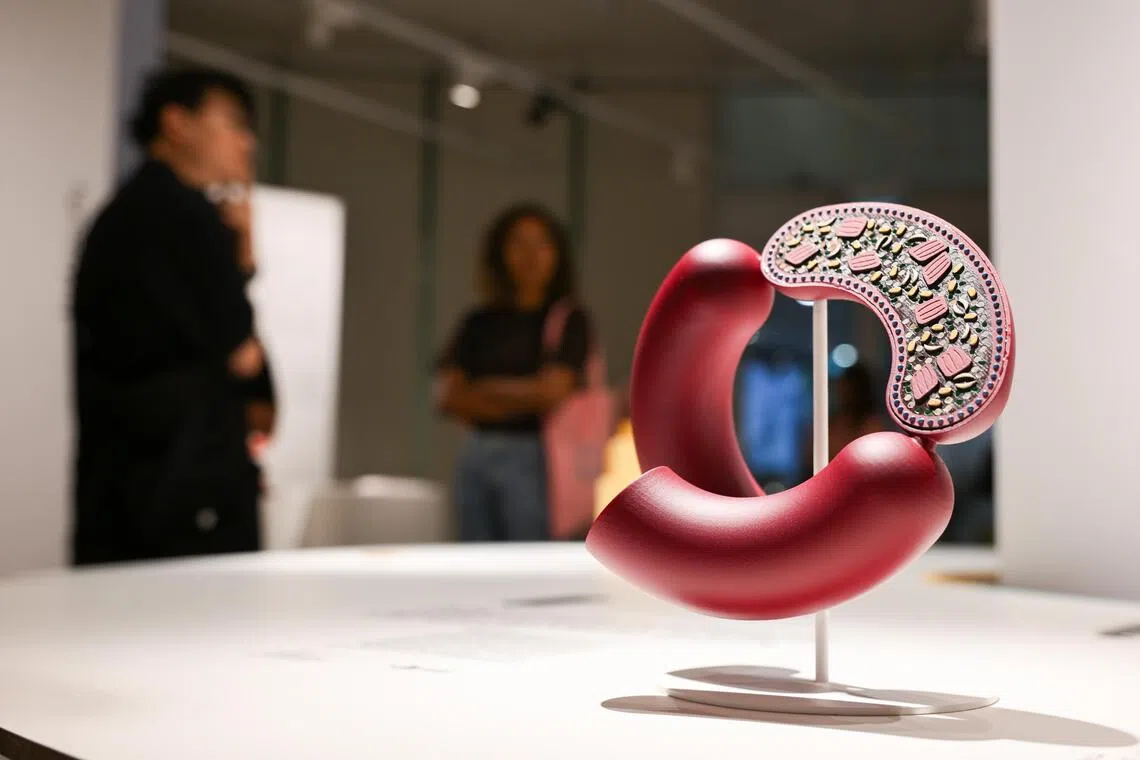
The Sausage of the Future exhibit at Nafa Fashion Gallery at Nafa Campus 2 on Sept 9.
ST PHOTO: SHINTARO TAY
Expanding the festival’s footprint, the Nafa Fashion Gallery at Nanyang Academy of Fine Arts (Nafa) Campus 2 welcomes The Sausage of the Future: Singapore Edition exhibition, which is a first for Asia.
Zurich-based Dutch designer Carolien Niebling reimagines the centuries-old sausage as a symbol of sustainable food innovation, drawing inspiration from Singapore’s rich culinary culture and food security priorities.
This commission showcases four inventive sausage concepts, developed with local chefs and food scientists, which tackle challenges such as food waste, biodiversity and preservation.
The show features anatomical sausage models, bold ingredient prints and a tasting event – highlighting how creativity and design can reshape what people eat for a more resilient future.
Future Impact 3: Design Nation’s homecoming
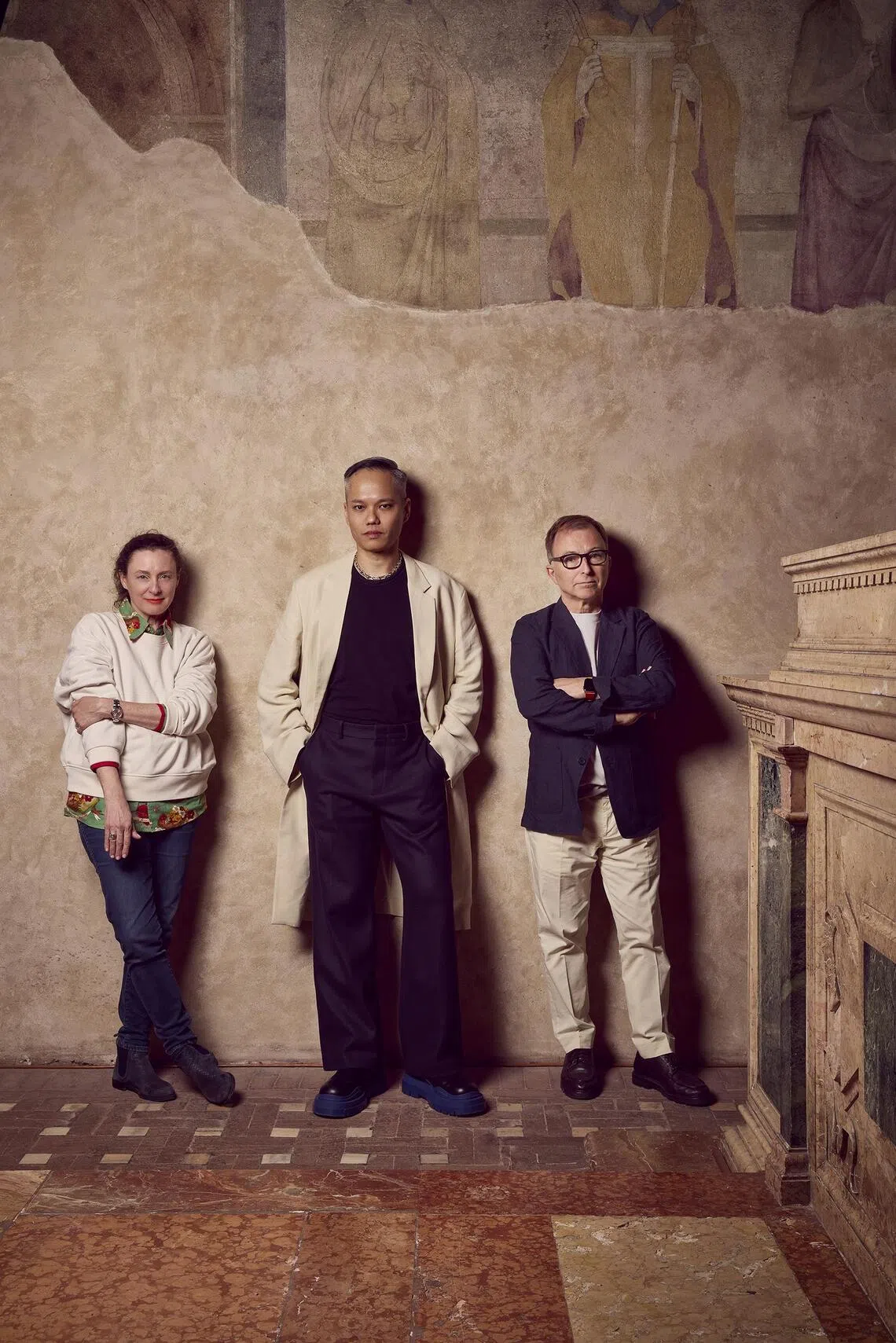
Future Impact 3: Design Nation is co-curated by (from left) Ms Maria Cristina Didero, Mr Hunn Wai and Mr Tony Chambers.
PHOTO: MARK COCKSEDGE
After captivating audiences at Milan Design Week in April, Future Impact 3: Design Nation returns from the Italian city for its highly anticipated homecoming at the National Museum of Singapore.
This third edition of the Future Impact series not only celebrates 60 years of design innovation in Singapore, but also marks a milestone: the introduction of Hunn Wai from Lanzavecchia + Wai as the first Singaporean co-curator, working alongside acclaimed curators Tony Chambers and Maria Cristina Didero.
The homecoming is not just a showcase but also a significant milestone in Singapore’s ongoing journey, and a spirited call to imagine how design can inspire new ways to live together in an ever-evolving world.


